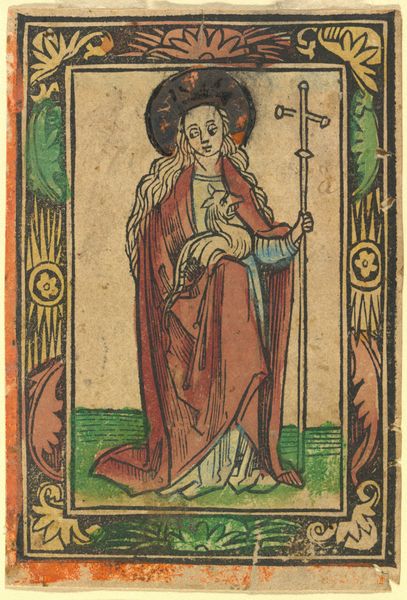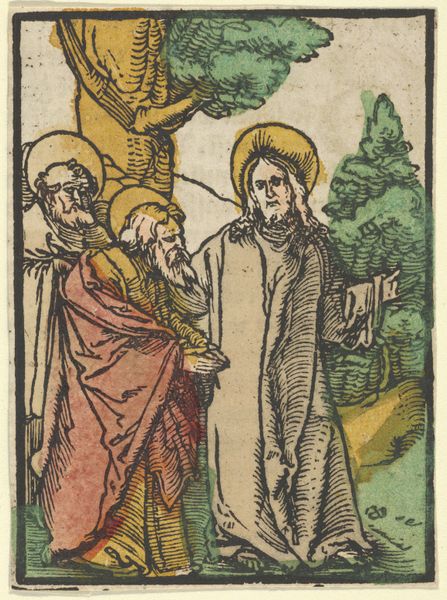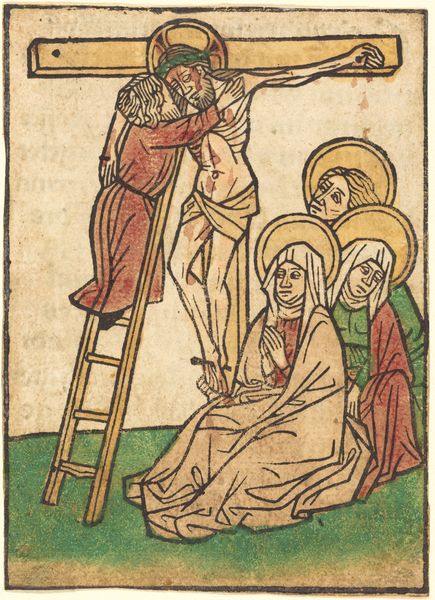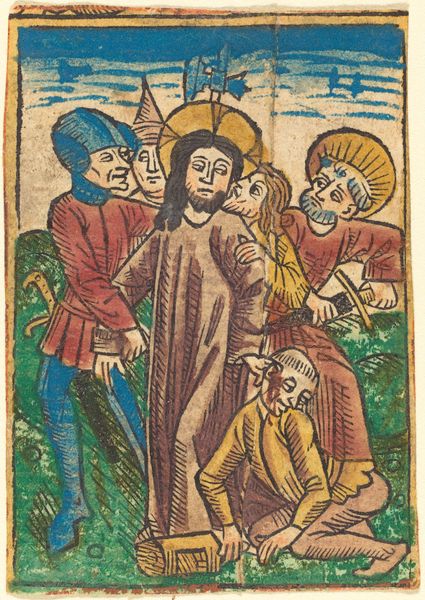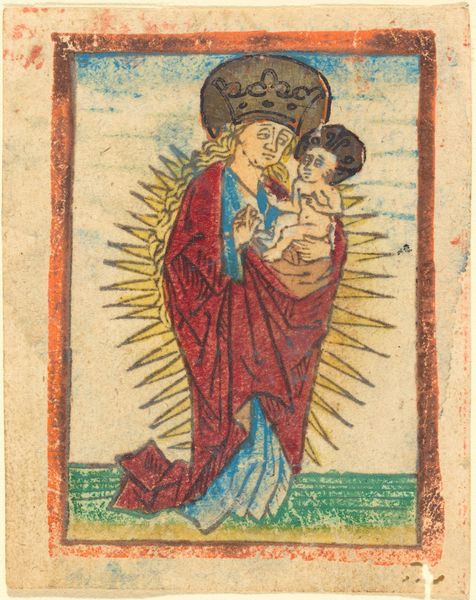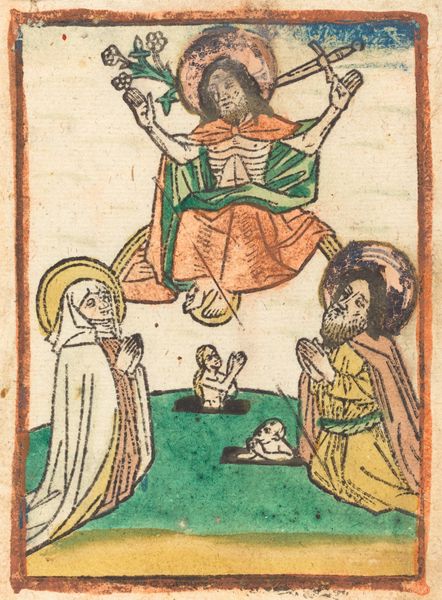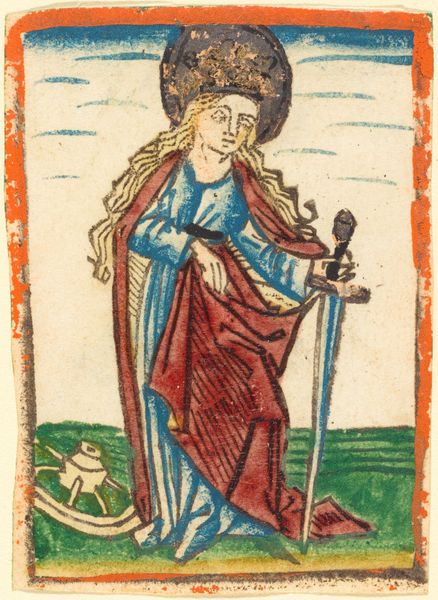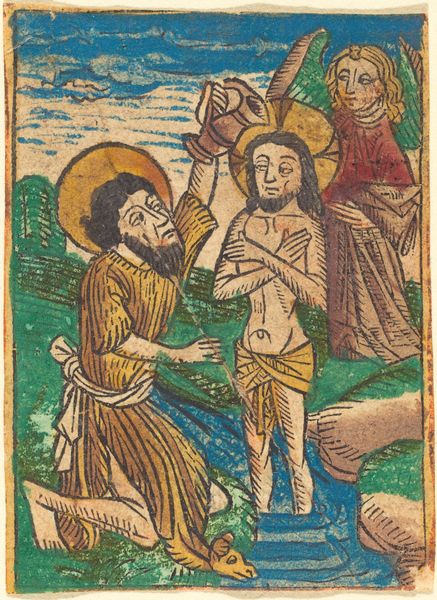
tempera, print, woodcut
#
medieval
#
narrative-art
#
tempera
# print
#
figuration
#
woodcut
Dimensions: Overall: 11.1 x 8 cm (4 3/8 x 3 1/8 in.) overall (external frame dimensions): 59.7 x 44.5 cm (23 1/2 x 17 1/2 in.)
Copyright: National Gallery of Art: CC0 1.0
Curator: Welcome to this discussion on "Noli me tangere," attributed to Ludwig of Ulm. It's a fascinating piece rendered in tempera, seemingly a woodcut print as well, presenting a key biblical scene. Editor: My immediate response is to the flatness. It’s visually striking how little depth there is. And, it gives this medieval print a crispness that's almost modern, belying the clear labor in the production of the print and the paints. Curator: Indeed. "Noli me tangere," meaning "Do not touch me" in Latin, depicts the encounter between Mary Magdalene and the resurrected Christ. Look at how Christ is positioned with his hand raised. This gesture became a potent visual symbol cautioning against physical contact, marking the shift from earthly to spiritual existence. Editor: And that positioning must have been quite intentional. A materialist perspective reveals so much here—woodcuts required skill and physical endurance. Plus, each color adds another layer of technical execution and expense, so it speaks volumes about the commission or the artist’s commitment. I wonder where the materials were sourced, and who was purchasing prints such as these. Curator: It absolutely would have reflected the culture and class that both enabled and supported such work. We often see these stories depicted in grand altarpieces, but this, a print, brings the story to a different audience and on a smaller, perhaps more personal, scale. Observe how the gold halos immediately catch your eye. What do those choices signify? Editor: Gold indicates value, of course, but from a practical standpoint, it's a tempera technique using materials from very specific places—gold leaf, painstakingly applied and burnished. How the light catches that must have been carefully considered in relationship to where a print such as this was hung, as well. It underscores your suggestion of personal experience of the artwork. Curator: What a beautiful testament to material intention. I am left with a sense of the intimate emotional exchange captured here, accessible across centuries because of how signs and signifiers remain intelligible. Editor: And I’m appreciating this medieval print anew, thinking of the hands that painstakingly crafted it, grounding the spiritual encounter in very real labor.
Comments
No comments
Be the first to comment and join the conversation on the ultimate creative platform.


